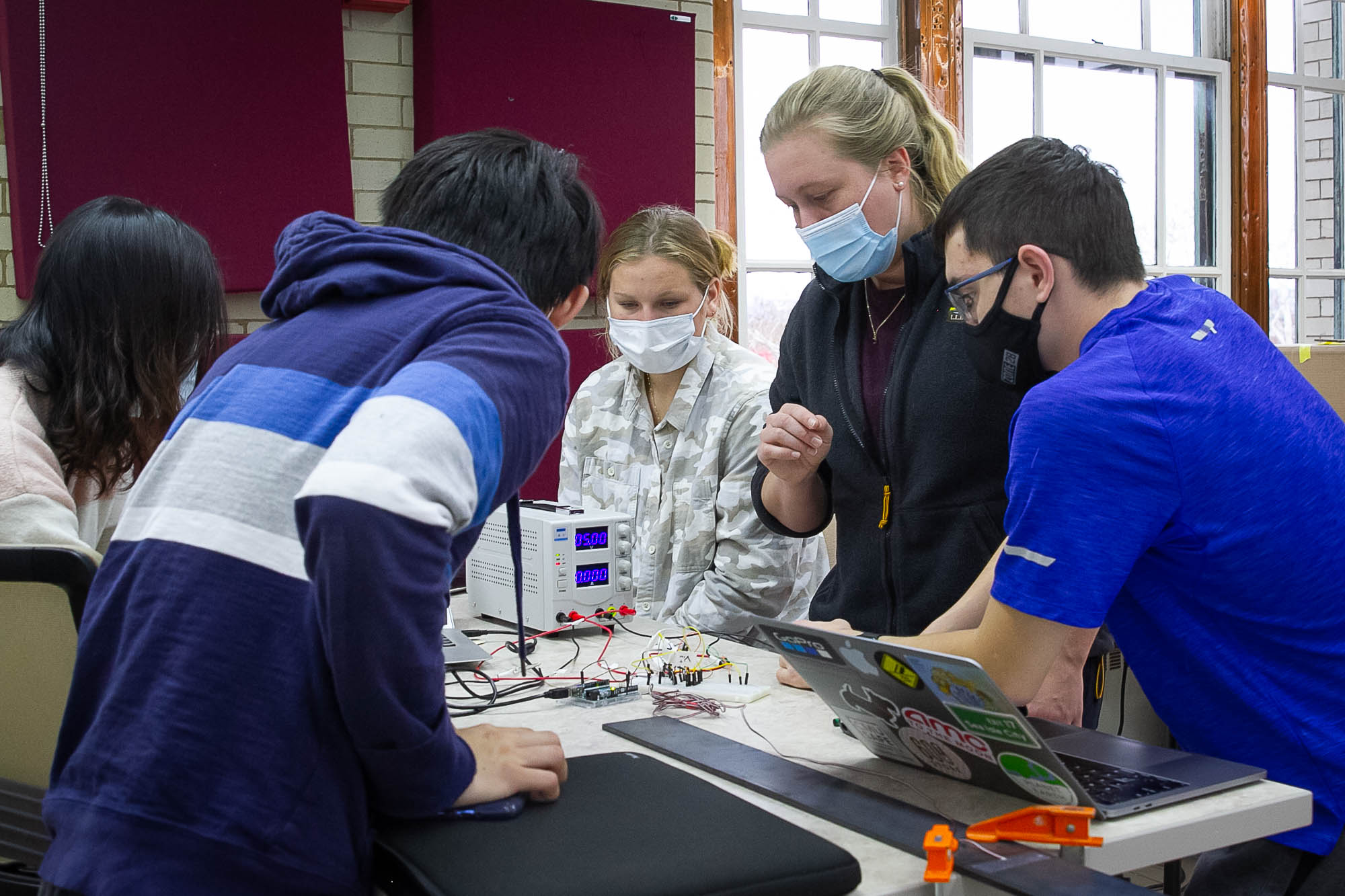
The Evolution of CEE: Preparing the Next Generation of Engineers and Problem Solvers
CEE’s latest initiatives have included the launch of an Environmental Engineering bachelor’s program, new lab courses for Civil Engineering undergraduates, a stronger emphasis on sensors in design courses, and a growing focus on diversity, equity, and inclusion. Overseen by Department Head Dave Dzombak, our faculty and staff are equipping students to become skilled problem-solvers, critical thinkers, and industry leaders who apply a deep understanding of CEE principles, technology, and tools to make communities around the world safer, more equitable, and more inclusive for all.
Part 1 // Part 2 // Part 3 // Part 4
Students Utilize Sensing Technologies in CEE Project Courses
Across the four CEE project courses, students gain hands-on experience solving complex problems while facing uncertainty, risk, and constraints that mirror the challenges they’ll face as professional engineers. Along the way, they become increasingly skilled at applying the knowledge and tools essential to the field—including the ability to use sensing and computing to design, construct, operate, and maintain individual and interdependent infrastructure systems.
CEE undergraduates first encounter the topic of sensing in the first-year project course that introduces them to the domain of civil and environmental engineering. As sophomores, students explore computing and sensing in greater depth in CEE Challenges: Design in a Changing World.
Taught by professor Katherine Flanigan, this year’s sophomore sensing project was focused on structural health monitoring (SHM), which requires gathering accurate, timely information about structural condition and performance. Each student team had to create, calibrate, and validate a SHM design. To do so, each group designed a scale using a cantilever beam strain gauge, conditioning circuits, and an Arduino Uno data collection unit. The teams then competed to see who could most accurately weigh the given load—in this case, a toy dolphin dressed as a pirate, clenching a bag full of pirate booty.
"It’s an exciting time to be in CEE. Civil and environmental engineers are being asked to lead in devising solutions to problems related to massive global challenges."
The project introduced the technology, methods, and challenges of stress monitoring for bridges, buildings, and other large structures. It also encouraged students to consider how sensing is used to plan and design maintenance activities, increase safety, verify hypotheses, reduce uncertainty, and widen general knowledge about a given structure.
Later project courses offer more opportunities to apply sensing knowledge and skills. In this year’s junior project course, students utilized sensing systems to monitor space usage and traffic congestion in a busy area of Porter Hall. In the senior capstone course, one group designed a proposal for a park water feature with water-level sensors that inform decisions about retaining or draining water.
“It’s an exciting time to be in CEE. Civil and environmental engineers are being asked to lead in devising solutions to problems related to massive global challenges,” says Flanigan, referencing aging infrastructure, population growth, and climate change. “Our department is strategically keeping pace with the changing CEE landscape by teaching advanced interdisciplinary analytical skills that enable our graduates to be technological leaders, using tools and technologies from across fields for the analysis, design, and optimization of critical infrastructure systems.”